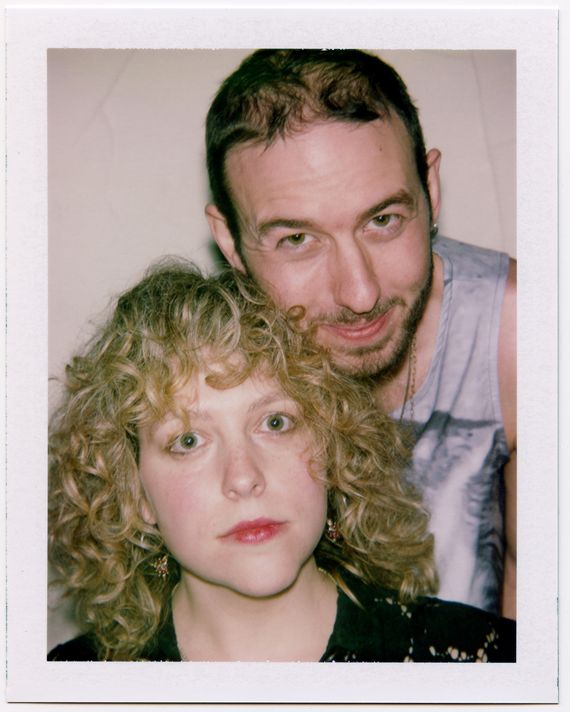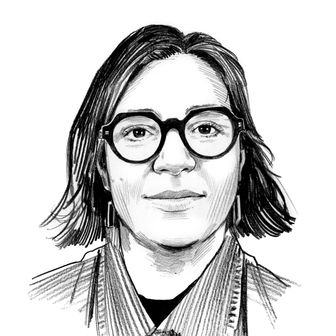
On a recent rainy night in Manhattan, more than a hundred people gathered at St. Mark’s Church-in-the-Bowery to celebrate the launch of Parapraxis, a new magazine about the century-old practice and theory of psychoanalysis. The party, co-hosted by the journal n+1, primarily consisted of writers, academics, and analysts, most of them young. You could identify some of the analysts by their clothes (fleeces, button-downs) and their jokes (“How many dollars per hour are they charging for this?”). Alex Colston, the 31-year-old deputy editor of Parapraxis, who is training to become a clinical psychologist, set a stack of glossy magazines on a scarred wooden table near the door. He wore a slip that was screen-printed with an image of Freud’s face — not the classic photograph of the white-haired sage with a cigar and the suggestion of a scowl but a portrait of the doctor as a young man, dark-haired and handsome. “It felt gimmicky,” Colston said, “but I can’t get enough of a pun.”
The magazine’s founding editor, Hannah Zeavin, 32, an author, professor, and historian of psychoanalysis, strolled over in a black lace dress and chunky black creepers to pose for a photograph with Colston. Her mother and stepfather, Lynne Zeavin and Donald Moss, both eminent Manhattan psychoanalysts, were in attendance. Moss joked that the editors looked like Freud and Dora, the latter being one of Freud’s most famous patients (a teenage girl whose treatment was an abject failure). The two met on Twitter around 2020 and found themselves talking for hours about psychoanalysis — its institutional and theoretical failures, and what they see as its unmatched potential for helping people understand themselves and the world. They liked the idea of a publication where writers could imagine “a psychoanalysis for the 21st century,” as Zeavin put it.
Like most people interested in psychoanalysis today, Zeavin and Colston have an ambivalent relationship to Freud, a man whose insights into ambivalence have permeated western thought and culture. His most fundamental observation is that behavior is governed by unconscious fears and fantasies. Things happen to us in our earliest childhood that, lost to memory, haunt us like ghosts, prompting us to do irrational things that cause us to suffer and to repeat those errors over and over. His proposed treatment was as simple as it was radical. Two people meet in a room. The patient shares whatever comes into her mind. The doctor listens and occasionally speaks. Over time, this conversation can engender a change. His work became a way of understanding not just individual behavior but the forces that have shaped history: political and economic revolutions, wars and religion, art and literature. Still, his theories and methods were sometimes flawed. Zeavin pointed to “psychoanalysis’s grave errors around conversion therapy, around its transphobia, its ableism, its racism.” By the time Zeavin was born, mainstream culture had turned on Freud. In 1993, Time published a cover asking, “Is Freud Dead?” Other forces contributed to his decline, too — the rise of cheaper, ostensibly faster treatments like CBT and drugs like Prozac as well as the efforts of insurance companies to push patients toward those alternatives.
Lately, those in the field say they have seen a renewed enthusiasm for Freud — in college classes and training programs and in Parapraxis itself. Zeavin and Colston started the magazine in an attempt to explore and promote psychoanalysis without shying away from its founder’s faults. (The name, a Freudian term, refers to an error that reveals an unconscious wish.) A question posed in their first editors’ note sums up Parapraxis’s overall mission, which is both personal and political, with a Marxist bent: “What is psychoanalysis but the recuperation of history through its traumas and limits toward a curative and, we hope, emancipatory end?” Zeavin and Colston recruited a diverse group of editors and advisers, including Judith Butler and Hortense Spillers. The debut issue, dedicated to the theme of the family, is a sprawling collection of interviews and essays written in a range of styles — theoretical, literary, occasionally popular. On the website, one article considers the unconscious wishes and fears driving the white-supremacist internet personality Nick Fuentes, who recently made the puzzling remark that having sex with women is gay. “Many seem to believe he’s just committed some basic error, as if he simply doesn’t know what being gay is,” the philosopher Nathan Rochelle DuFord writes in the piece. “I’m going to treat this claim as if it isn’t an error but is instead a coherent expression of the right-wing politics of desire.”
Grace Lavery, a British professor of English at UC Berkeley whose piece on family sitcoms (an excerpt from an upcoming book) appears in the first Parapraxis issue, leaned against a column at the launch party and considered whether analysis is making a comeback. “Oh my God, I hope so,” she said. She wore a Jean Paul Gaultier halter top revealing a lot of ink: a mermaid playing a harp, a skeleton smoking a pipe. “Among the many things that psychoanalysis is, it’s an archive and a set of theories about how to survive fascism,” she explained. After a moment of reflection, Lavery, who is trans, added that she thinks Freud’s theories are “a really rich basis for thinking about transsexuality.” She ruminated on a passage from one of Freud’s last papers, “Analysis Terminable and Interminable.” “If we can encourage men to imagine that by relinquishing power, they are not mutilating themselves, and if we can encourage women to relinquish any shame that might be organized around sexuality or gender identity, then that would be the grounds upon which a richer future could be imagined,” she said. “I think about this all the time. The person for whom there might be hope, for Freud, is the transsexual.”
If it’s true that psychoanalysis is enjoying a resurgence, then why? Around the room, scholars floated various theories. Philosophy professor Abby Kluchin, alluding to the shock of Trump’s election, contended that analysis has “explanatory power for things we can’t otherwise understand.” Marisa Berwald, a psychoanalytic anthropologist and therapist, wondered if the method is becoming more popular because of economic and social uncertainty. “Psychoanalysis talks about instability, which we are experiencing,” she said. Arielle Angel, the editor-in-chief of Jewish Currents, mentioned that her magazine’s summer issue was, “by accident,” almost completely devoted to analysis. “Why did we do that?” she mused. “I don’t have the answer.” Michelle Rada, an associate editor of Parapraxis, detected “a growing cynicism around therapy that’s not in-depth — that tells you that bad thoughts or negativity doesn’t belong.” Freud, whatever else can be said about him, can’t be accused of trafficking in glib positivity. As he put it in Studies in Hysteria, “Much will be gained if we succeed in transforming your hysterical misery into common unhappiness.”
For her part, Zeavin thinks it isn’t so hard to understand why people are turning to the practice right now. “It’s just too bad out there, and it feels too bad inside,” she said. “We don’t have all the tools and techniques in the world. But one thing we have is this.”
By 10 p.m., the church was packed and the lights had dimmed. People sipped $3 beers and swapped insights they would usually share in seminars or with their own analysts. “I think people are really interested in understanding the social mediation of psychic drives!” one person shouted over the blaring trance music. Another argued that CBT is “obviously a capitalist solution for managing the productivity of workers.” By the end of the night, one magazine editor said she’d heard two guests had run into their analysts on the dance floor. “They’re both feeling freaked out,” she said.





